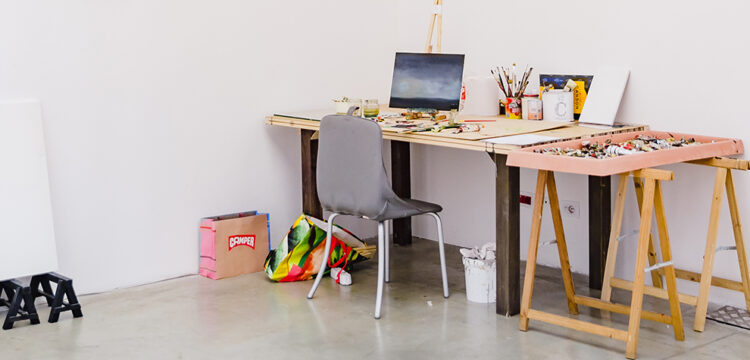Temporary Space
Self-organization and role-shifting as a way back to “normalcy”
Sonia D’Alto: Donuts_temporary space is an exhibition project born in December 2020 in Reggio Emilia in partnership with an initiative promoted by local cultural associations. Some of the many shops that have been closed or vacant due to the covid were occupied by different projects during the festivities. Artist Giovanni Copelli, also ventured into the role of the curator by setting up a temporary space with the goal of interconnecting works, artists, physical, virtual and public space. What kind of space did you find to host your project and who are the artists involved?
Giovanni Copelli: I was allowed to use a space located in a very central point of the city, first used by a tattoo artist and then turned into a clothing shop. The identity of the space, a former industrial space with large windows and a mezzanine floor, immediately suggested the possibility of a collective project and so I began to involve other artists, proposing them to exhibit our works together. Those are Giorgia Garzilli, Dario Carratta, Gianni Politi, Andrea Kvas, Nicola Melinelli, Mattia Pajè, Alice Visentin, Vincenzo Simone, Michele Tocca, Pesce Khete, Thomas Braida and Cuoghi Corsello.
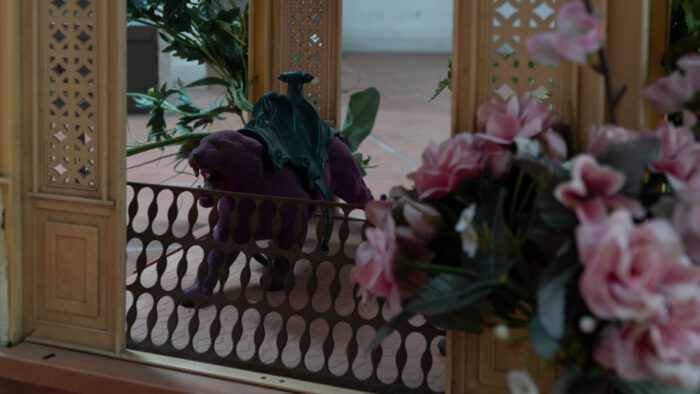
What was the criterion / methodology / storytelling that you used in your curatorial work?
I set the 20th of January as the end of the exhibition and inverted the processes of construction and use of the exhibition. I tried using as a creative resource all the limitations of the Covid situation that prevent travel and the creation of events, deciding to show the construction process of the exhibition, its gradual formation as I would receive, week after week, the works of the artists. This was possible through a specially created Instagram profile, where I could made the construction process of the exhibition public, gradually revealing the artworks and I organized guided tours by appointment. In this way, I’ve never provided a complete list of the artists who participated, but their name was indirectly inserted with the communication of the work that was included in the collective. The general criterion of curatorship was a condition of constant staging, of continuous interventions, which paradoxically stop at the final date, when the exhibition ended without an opening event.
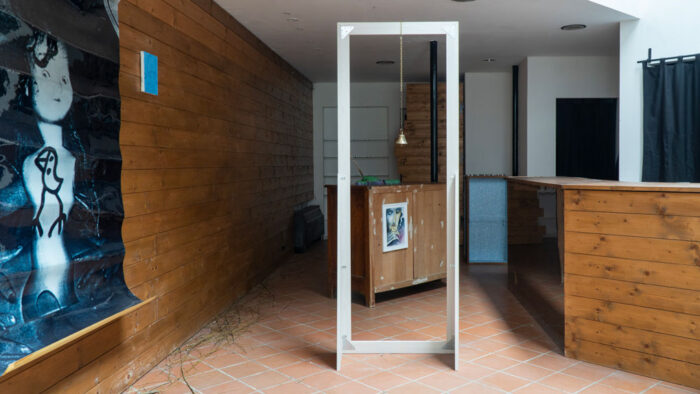
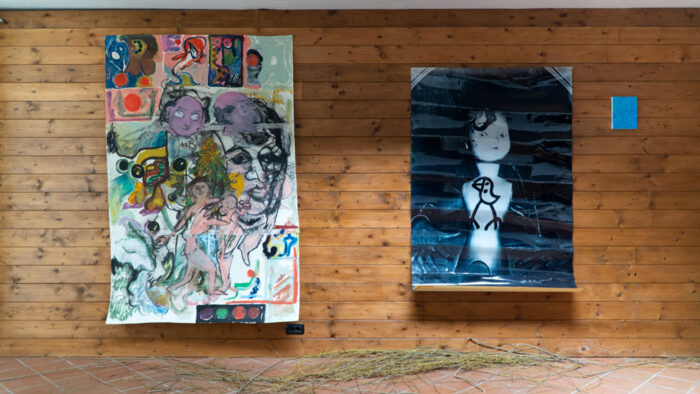
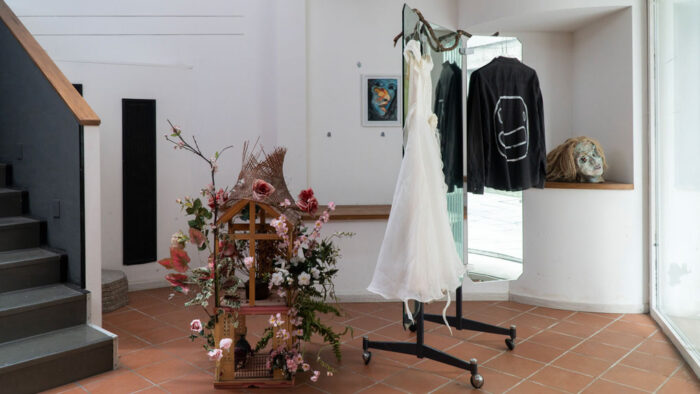
Did you write a text?
I didn’t write a text because I didn’t feel the need to do it; I wanted the exhibition to develop as a tale of works that appeared in the space next to each other, without voiceover, without a description to accompany them, without a narrative necessary to unite them. The only textual work was the captions I’ve provided on the Instagram posts.
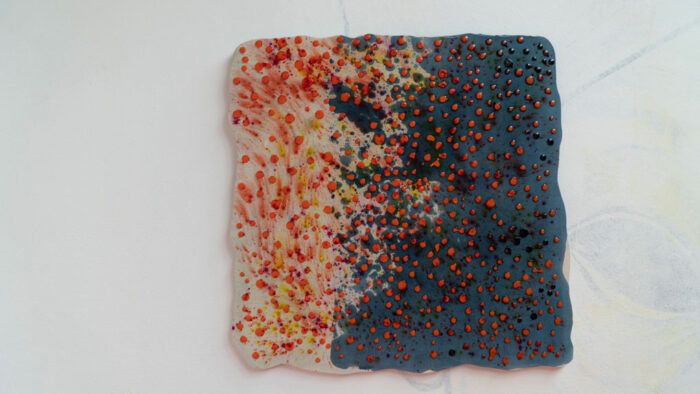
In this process based project, how did get the artists involved and what were their reactions?
I invited the other artists by simply asking them to present one or more works of their choice. There was a closer dialogue with some, but in general the proposals always came from the artists themselves, in some cases I didn’t even know what that artist would send me until I received the piece—which was a lot of fun.
As for their reactions, there was a lot of enthusiasm and generosity. Cuoghi Corsello who, being from the same region, could physically reach me, came to the space twice, and were very immersed in its atmosphere: they allowed me to exhibit a piece that had never been in an exhibition before (Casa Fiorita 1998) and they even managed to create a work specifically for the exhibition using exhibitors that had been abandoned there (Quadrupedi 2020). Gianni Politi and Vincenzo Simone decided to show old works that were never exhibited. Others have preferred to contribute with recent pieces, if not made specifically for Donuts. Pesce Khete sent me two very beautiful and truly surprising pieces in their almost monumental dimension of new production, Mattia Pajé also wanted to show new pieces, as well as Dario Carratta, Nicola Melinelli, Giorgia Garzilli, Alice Visentin. Michele Tocca gave me the opportunity to show me a piece of his world, quite literally, by sending three cloud studies that he made in his hometown, Subiaco. Thomas Braida sent me a piece that is already dated 2021, Little Death, a piece that I found very touching, perhaps because I could not but see a connection with the present. Andrea Kvas and I preferred to show works that had already been exhibited.
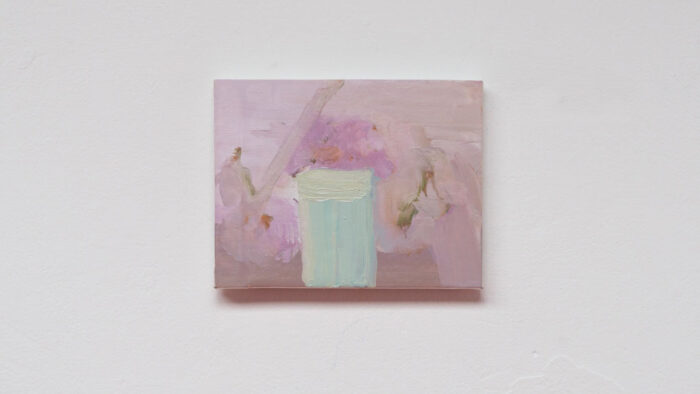
What kind of audience did the project manage to reach? and what were their reactions? Were there any specific comments triggered by the project in the local context?
Surprisingly there were many people who physically visited the exhibition and thanks to individual appointments, I was able to have intimate conversations and feedback in front of the works. These meetings also became a way to contemplate the intrinsic dynamics of exhibiting and seeing, of how, for example, each visitor directs his or her eye towards a specific artwork rather than another, and then listen to their reasons. Those who saw the exhibition told me how they felt very in touch with the artworks, after a year of generalized deprivation from art and events. From the conversations with individual visitors, has also emerged the question of how the art system has been shaped in the past years by the dependence, if not genealogy, of events, and how, once the latter have disappeared, the very visibility and presence of art has almost faded in the eye of the spectator.
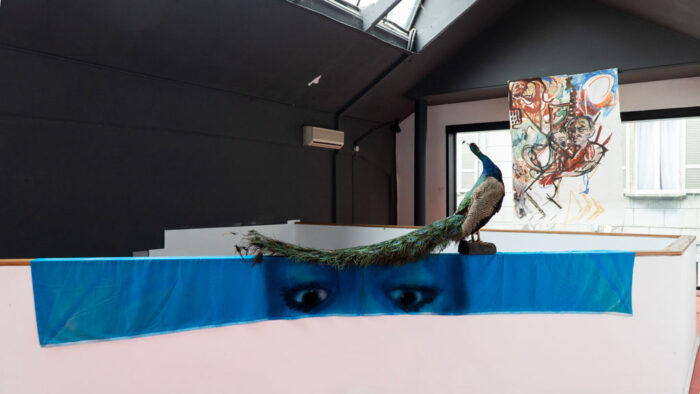
What was the greatest need you felt—both as an artist and as a curator—in this period marked by the pandemic? What are your thoughts and speculations about post-pandemic changes and transformations? Did the exhibition itself contribute to trigger any particular thought on this subject?
As I told you the chance to create this exhibition was born very much by chance, but as soon as this opportunity came, I realized how much I was in need of working on a collective project. I think it was also because of the physical distance that has separated me from others since last year, and because of the need to see something happen, materialize, when museums are closed and galleries cannot organize events. I have always been very fascinated by the dimension of exchange that artists can create, but never like in the course of this past year have I understood the fundamental importance of this exchange to allow the artistic experience to materialize, and with Donuts I found one more confirmation. As an artist I was lucky enough to do several exhibitions in 2020 but the pandemic has unfortunately made these events very arid moments: not being able to travel, not being able to physically reach the exhibition, not being able to organize an opening, really prevented me from the opportunity to establish a direct confrontation with others. On a personal level, organizing a group exhibition in my city and being able to have physical meetings allowed me to reconnect with the outside world.
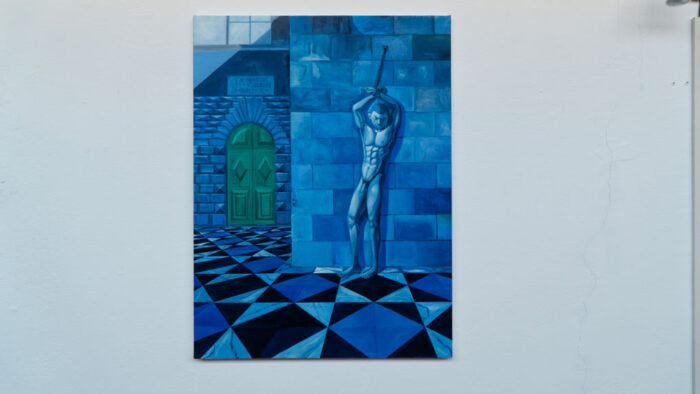
I think that the most difficult challenge that will arise when the medical emergency begins to fade, and we return to a condition of “normalcy”, will be to re-establish connections between us, connections that have been severely tested by months of isolation. I think that artists in particular have fully realized that they lived in dangerous isolation even before the Covid, and are now very frightened by the idea that there might not be much room for art in a post-pandemic world. But in my opinion, moments like this can act as an alarm clock, an opportunity to plan new strategies of action. I think that artists first and foremost have a lot of responsibility when it comes to reaching an audience, and I hope that there will be even more motivation to push into finding ways to establish new connections.


